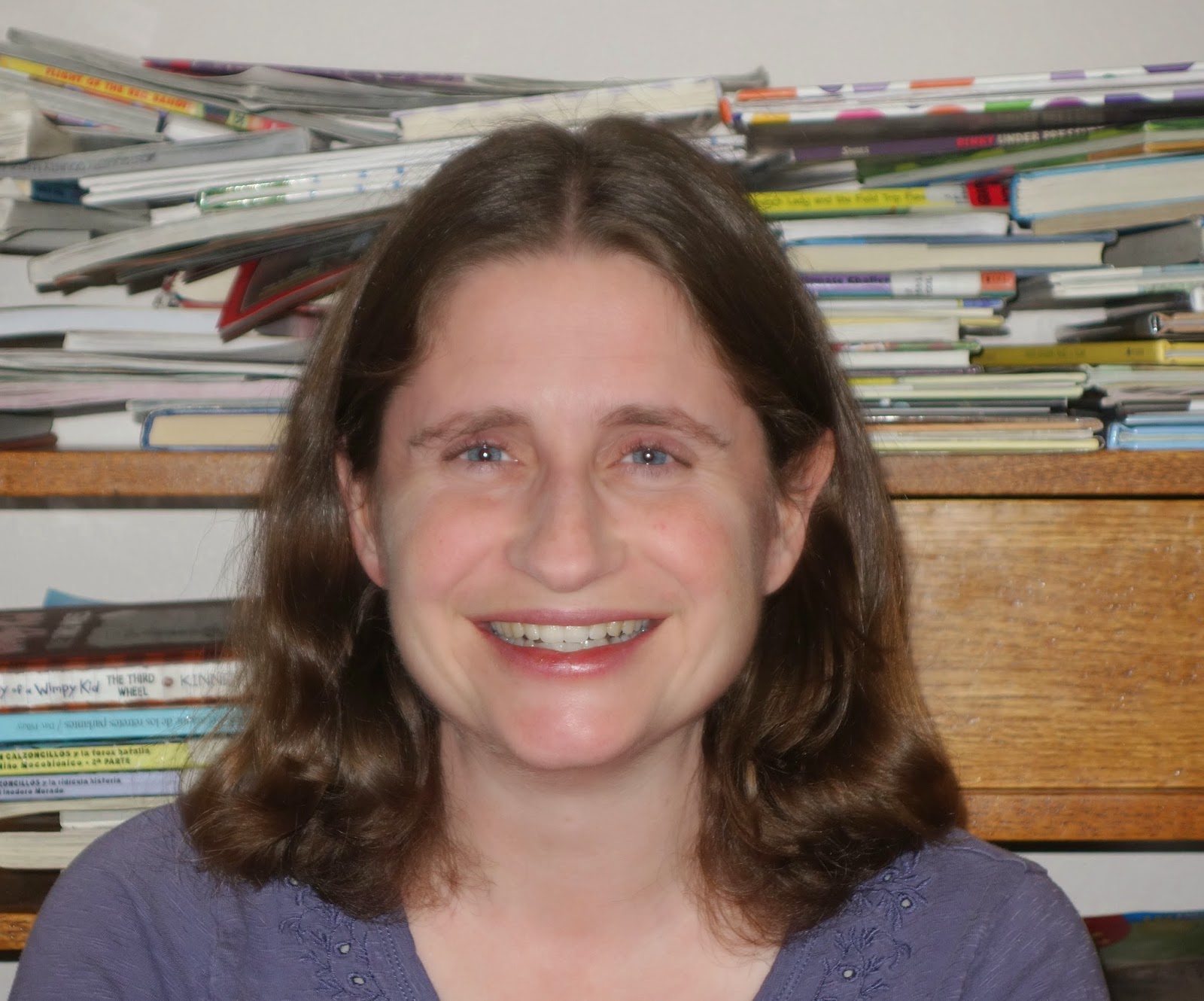In celebration of the upcoming holiday, this week we have another guest blog post, this one from Deborah Bodin Cohen, author of the "Engineer Ari" series! In this post, Deborah writes about what inspired her newest book, Engineer Ari and the Passover Rush.
You can also read another guest post about creating joyful Passover traditions from author Laura Gehl, or check out these reviews of this year's newest Passover stories in The Times of Israel!
"My daughter, Arianna, celebrated her Bat Mitzvah this past
December. Of course I'm biased, but she
has grown into a terrific young woman with interests in soccer and chess. But,
back in pre-school, she loved trains – train books, train sets, building model
trains. We could entertain her just by
taking her on a subway. I felt
similarly passionate – just not about trains.
I cared about the land of Israel and sought to share my love of Israel’s
rich natural beauty with Arianna and other Jewish kids like her. So, I combined her passion and my passion and
Engineer Ari was born!
When I lived in Israel as a rabbinical student, I passed the
historical Jerusalem train station each day on my walk to class. That
100-year-old station intrigued me. Back
in the 1990s, it had fallen into disrepair but you could still ride the rails
from Jerusalem to Jaffa, passing down the Judean hills into the fertile valley
of orange groves and wild flowers that lead to the Mediterranean. Now, thankfully, the station has been
refurbished.
.jpg) |
| postcard of Jaffa station in the Ottoman period |
In each of my Engineer Ari books, I try to focus on one historical element of Jaffa & Jerusalem railway. The Rosh Hashana Ride recreates the railway’s celebratory opening in 1892 during the period of the Ottoman Turks. In The Sukkah Express, Engineer Ari and his friends build a sukkah with the leftover supplies from the 2-year-old project of building of the railway. The Hanukkah Mishap revolves around a reoccurring problem – camels that sat on rails.
In The Passover Rush, I chose to focus on how the Jaffa & Jerusalem Railway changed how “time” was treated in the land of Israel. Before the coming of the railway, time’s passage was marked primarily by Muslim calls to worship. But, with the opening of the Jaffa & Jerusalem Railway, the European clock became predominant. Muslim prayer times were even standardized to fit within the structure of railway time. Time, which had been meandering and organic, now was subject to deadlines and the need to rush.
Railway time made me think of making matza – a process that
bound to time limits and schedules. Matza, from start to finish, has to be complete
in 18 minutes. Otherwise, it is not
kosher. The J & J Railway, though,
tended to follow typical “Jewish time” – in other words, it was often
late. A correspondent named Mr. Vale
wrote in 1901: “There are as many different timings at Jaffa and Jerusalem as
there are clocks in those towns. The
railway clocks generally are 5 minutes behind the slowest ones, but on one
occasion I saw the Jerusalem Station clock being suddenly advanced by 20
minutes just as the passenger train was going to start!”
I wish you a very joyful
Passover. In Israel, the old Jaffa &
Jerusalem rails are most certainly covered with beautiful wild flowers at this
time of year. If you have a train
enthusiast at home, please tell him or her to pull the whistle cord: choo, choo. And, enjoy the ride!"Deborah Bodin Cohen
Here are few great resources for Jewish kids who love
trains:
Israel Railway Museum in Haifa has online line pictures and
information: http://www.rail.co.il/EN/Fun/Museum/Pages/about.aspx
The Jerusalem Train Station’s site includes a historical
pictures and pictures of the restoration: http://www.firststation.co.il/en/
Haaretz newspaper wrote about the history of the word Rakevet, train engine: http://www.haaretz.com/news/features/word-of-the-day/1.538322
.jpg)
